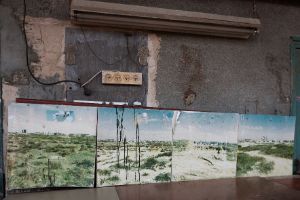
Luciano Berio
“A musical work is never alone. It always has a big family to cope with (...) and it must be able to live in the present in many different ways, sometimes forgetting its own origins.”
It is an aesthetic conception of openness that Luciano Berio (1925-2003) expresses here. Every piece of music is situated within a comprehensive context of tradition. Out of this context, sometimes also in opposition to it, manifold possibilities of understanding and access unfold. Indeed, it may be a special characteristic of a work to be able to view it from completely different angles. Berio's approach leaves no room for aesthetic dogmas or blinkers, and it is precisely this freedom from blinkers that characterises his compositional work in a special way. The fusion of art music and authentic folk music, the incorporation of jazz elements or complex African rhythms into avant-garde compositions, various procedures of montage and quotation, the ignoring of genre boundaries, especially in music drama works - all these are Berio's compositional methods and concepts that illustrate his originality and his will to leave the beaten track.
The rigorous sense of tradition, which informs Berio's work was instilled in him by his origins, coming from a family of musicians in which his father and grandfather were already active as organists and composers. Thus, it was only logical that Luciano Berio enrolled at the Milan Conservatory to study music. Following a hand injury in the chaotic last days of the war, the 19-year-old was no longer able to pursue the pianist's career he had initially envisaged, and Berio turned his attention to composition. Nevertheless, he still performed as a piano accompanist. In this capacity he met the American soprano Cathy Berberian, who was to become his congenial interpreter. In the 1950s, Berio attended the Darmstadt Summer Courses and participated in the intense discussions surrounding Karlheinz Stockhausen, Pierre Boulez, and Luigi Nono. Perhaps even more profound were the inspirations Berio received from literature. Reading modern novels by Joyce, Proust, and Beckett, for example, was important. On the other hand, Berio engaged in a fruitful exchange with three Italian writers and theorists, which was reflected in his musical works: with Eduardo Sanguinetti, Italo Calvino and Umberto Eco. All four were united by the idea of the work of art as multi-layered, polyphonic entity of numerous different levels of metaphorical implication.
From the 1960s onward, Berio continuously produced works, which established him as one of the leading figures of New Music, such as the “Sequenza” compositions for a solo instrument, a series which continues up to the posthumously premiered “Sequenza XIV” for double bass from 2002. Perhaps his most famous composition, “Sinfonia” (1968/69), is a prime example of a multifaceted work which can be appreciated from many perspectives, a fascinating, labyrinthine collage of stylistic quotations and texts from Samuel Beckett to Gustav Mahler. But Berio was also a man of the theatre, creating highly original works for the stage. Many of his instrumental compositions also have a specifically theatrical quality.
In addition to his creative activities, Berio took on a variety of other tasks. For example, he taught composition – among others, the American minimalists Steve Reich and Terry Riley were his students – and from 1974 to 1980 he headed the electroacoustic department at IRCAM, which was founded by Pierre Boulez. From the late 1980s onwards, Berio's oeuvre took on an additional dimension as he began to explore and radically re-appraise the traditional materials and practices of Western art music. Alongside his autonomous work, he also composed “Rendering”, the adaptation of a symphonic fragment written in the last year of Schubert's life, and his completion of Puccini's opera “Turandot”, which the latter had not been able to complete. Luciano Berio died in Rome on 27 May 2003.
